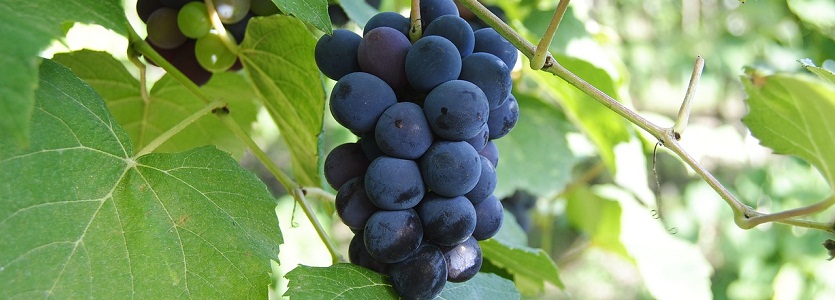In our pilgrimage through the Wine Universe, we learned a lot about the wine bottle, its appearance and its standardized format, we also penetrate into the world of cork stoppers – an inseparable companion of wine -, we went into the history and development of the labels. Information that has not only made us more familiar with this precious drink, but also helped us to form a rather large wine culture.
“Wine is synonymous with culture”.
And in order to continuing this cultural path, ENOVÍRTUA brings you, wine lover, winemaker, producer, wine salesman, sommelier, chef de cuisine, whatever you are either a professional or a wine lover, the history of the great protagonist of this precious nectar of the gods – the Grape.

http://2.bp.blogspot.com/_Jd0JrUWSORw/TI0TnQN9VrI/AAAAAAAAA6A/1Uvtg3t45wg/s1600/vinha.jpg
1.1 Vine and Grape
The origins of the vine and grape are so ancient as to become legendary: some of them trace the origin of the vine to Adam and Eve, stating that the forbidden fruit of the Earthly Paradise was the succulent Grape and not the anonymous apple; the earliest witnesses to the practice of viticulture are found in Genesis (chapter 9) when Noah, at the end of the Universal Flood, landed on the ground, planted the vineyard, and was drunk with his intoxicating wine. Coming to more recent times, many claim that the vine originates in India and that in the third millennium BC it spread first in Asia and then in the Mediterranean basin.
It is believed to have developed around 7500 BCE in the Transcaucasia region, which corresponds today to Armenia and Georgia.

http://www.worldatlas.com/webimage/countrys/europe/amnewzzz.gif
From then until the classical era, vineyard cultivation spread in almost all Mediterranean countries until reaching the Middle East.
It is believed that the Muscat and Syrah vines are the oldest in the world, as the etymology of their names indicates. Archaeological finds trace the early experiments in grape production and wine production to the Neolithic period (8000 BC). In Turkey and Jordan huge deposits of wine containers were found which suggest that the grape was already squeezed. At that time, however, the wine was made from wild grapes, while the first evidence of any viticulture activity dates back to Georgia 3000 years later in the Stone Age.

http://vins-france.com/rtefiles/images/travertin.jpg
In the West, the culture of the vineyard was already prominent in Armenia (Mesopotamia), where the first revolution of humanity occurred with the abandonment of nomadic life by some communities for the consequent birth of agriculture. It is the area of the “fertile crescent” between the courses of the Tigris and Euphrates rivers, the cereal motherland and the laboratory for the discovery of the fermentative processes from which the bread, the cheese and the euphoric drink descend.
Some Egyptian hieroglyphs dating back to 2500 BC already describe various types of work with grapes. In ancient Egypt the practice of winemaking was so consolidated that in the funeral corridor of Pharaoh Tutankhamen (1339 BC) there were amphorae containing wine on which the area of provenance, the crop, and the producer were depicted; some of which contained wine aged many years ago. From Egypt, the practice of grape production and elaboration spread to the Hebrews, Arabs and Greeks: the latter also dedicated to wine a deity, Dionysus, the god of coexistence.

http://antigoegito.org/wp-content/uploads/2010/11/tumbadeNakht.jpg

http://www.bonde.com.br/img/bondenews/2011/11/img_1_31_1807.jpg
source: http://www.zipmec.com/uva-storia-produzione-commercio-guida-frutta.html
In the next chapter, we will talk about the beginning of the production and elaboration of wines in Italy and then we will talk about the Italian Grapes. See you there!






